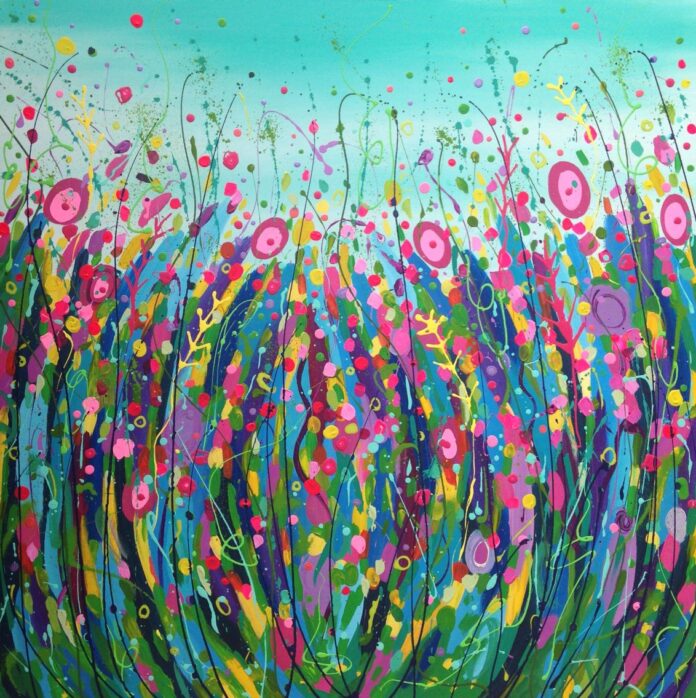“Freeze in front of a painting, hold your breath, and in silence allow it to speak to us, to inhabit us…” An encounter with art can teach us to be happy, says Christophe André. Four paintings through the eyes of a psychotherapist.
GUSTAV KLIMT’S LESSON: LOVE THE STATE OF HAPPINESS
“One can always learn happiness, even if its language is not our own…”
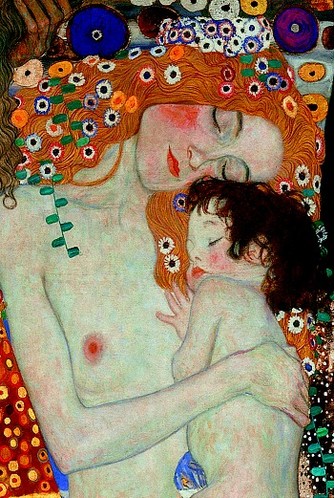
The baby snuggles up to its mother. Both are asleep, tenderly, touchingly embraced. The baby, clasped to its mother’s breast, is soaked in the warmth and love of the mother who gave it life.
Klimt’s painting makes us think about the great mystery of the birth of happiness. And also about the mystery of how it is transmitted and how future joys are prepared. Happiness as an inheritance and as a promise is what this scene is about.
To find happiness is probably just to find it again. In what distant memories does this complex and elusive feeling called happiness originate?
Psychological theory of imprinting states that certain periods in a person’s life are especially favorable for the perception of certain knowledge. For example, languages: if we have often heard a foreign language in early childhood, it will be easier to learn it later. Also the language of happiness is more accessible to us if it was familiar to us in our early years.
What if this is true for happiness itself? What if childhood happiness allows us to find adult happiness later, in all its various manifestations? In these very early impressions, which are inexpressible in words, are the keys to the future capacity for happiness, the ability to feel happy.
If we have received this inoculation of bliss as early as possible, we already have a chance. And with it comes the responsibility: not to miss it, because happiness has yet to be created. For those who haven’t had that chance, there’s only one thing left to do: Take it upon ourselves.
VINCENT VAN GOGH LESSON: LOOK AT THE SKY
“Happiness takes its whole origin in moments of grace. To stop, to be silent. To look, to listen, to breathe. To marvel.”
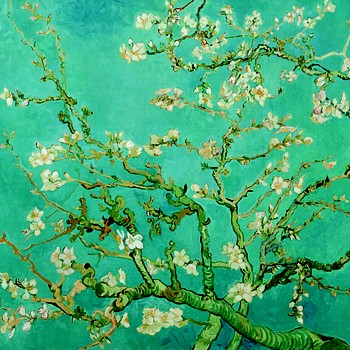
Upward, upward, into the blue. The flowers of the almond tree reach for the sky. Nothing else: just the whiteness of the petals and the cerulean blue. Like the embodiment of happiness, strong and fragile as life.
Plagued by inner discord and mental illness, Van Gogh makes a dizzying, stunning leap and focuses on the main thing: the rush of life to the beyond, to the heavens. He paints the picture with his eyes raised to the sky, seeing nothing else around him. He removes from it any landscape, any additional information, even the trunk of a tree, in order to speak only of this unity of opposites: colors and sky, white and blue, transient and eternal, earthly and heavenly…
In the same way, he eliminated – but did not erase – his own suffering at that moment in order to preserve forever and transmit to us the feeling of happiness at the sight of a blooming almond tree.
According to evolutionary psychologists, many of our behaviors and affections are vestiges of our “animal” needs. People appreciate the beauty of natural scenery – a river framed by trees or a coastline bathed in sunshine – because it promises them sustenance, rest, recreation – all the things we need to survive…
But nature awakens, in addition to pleasure, a vague, dark, deep sense of belonging to a single world order that embraces us and surpasses our understanding.
This is why we do not simply observe nature or even admire it. In fact, we are becoming a part of it, approaching our primal essence as living beings. Whether we contemplate a blooming tree, whether we are absorbed in the movement of waves or clouds, we are immersed in nature, returning to it.
…Whenever we breathe in the fragrance of a meadow or a forest, a distant echo of this happiness of “finding nature” resounds in us. Encounters with nature do not simply nourish happiness – without them it is impossible… Fragility and strength, rootedness in life and aspiration for the beyond.
These features of emerging happiness are the most important, but also the most subtle. There is nothing easier than to trample them down or not to notice them. The painting opens our eyes to beauty and fragility… and also to their absolute necessity for our existence.
A LESSON FROM GASTON SHESSAK: WORK ON YOUR HAPPINESS
“Only we ourselves can wage this struggle for the bright feelings in our souls, we alone can choose happiness over unhappiness.”
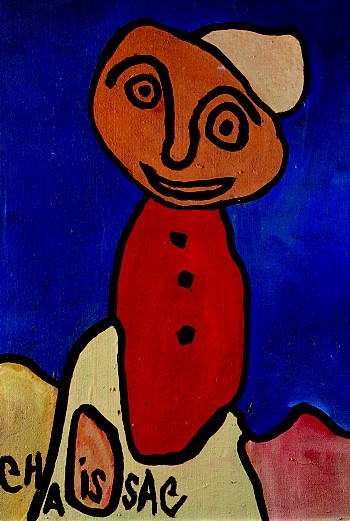
Happiness is what? A state of mind? A work of the mind? A decision, an effort, a desire? Or a construction that we erect within ourselves? Most often – all together, provided that there is a minimum of material prerequisites necessary for its emergence.
On the one hand, this is good: our happiness depends on ourselves. But at the same time it is bad: if so, we ourselves are responsible for it. We are required to work on it, to make an effort.
This skewed figure – without arms, without legs, with an ugly but radiant face – is a kind of crooked mirror into which its creator, Gaston Chessac, looks.
This melancholic man with poor health reminds us that happiness is never, or almost never, given for free, just like that. But it is always available to the powerful human mind. Wide smile, full of strength and generous trustworthiness; mocking, attentive and, most importantly, eyes wide open to the world. The little man in the painting reminds us of the main thing: we have the ability to achieve happiness. For some it’s a talent, for others – the result of a struggle, but happiness is available to everyone …
Where does the strange popular belief that happiness must be spontaneous come from? That efforts to achieve it lead to nothing or are even harmful? Why is the conscious pursuit of happiness subject to such criticism?
The punishment that God sent to Adam – in the sweat of his face to earn his bread – also meant: you will also earn joy in the sweat of your face.
Happiness is not an accident, but a way of thinking that can be learned and developed. It is often said that life is a struggle. Happiness is also a struggle, especially for those who have not been spoiled by life at first.
Whatever our weaknesses may be – it may be the physical imperfections of our bodies or the wounds coming from our past, our anxieties and moping – they invariably give us plenty of reasons not to be happy.
But if once we state that things are always this way: there are happier people than I am, and there are unhappier people than I am, what excuse would we then use to complain endlessly about our bitter lot? This position of resentful victimhood is all the more dangerous because it can turn us into untouchables, to whom no one dares to approach for advice or guidance. Which will exacerbate our loneliness and our weaknesses. And in the end, it will still bring us back to ourselves.
It’s impossible to experience happiness all the time. But you can always take care to leave the door open in case it returns.
GUSTAVE COURBET’S LESSON: HAPPINESS IN THE MOMENT
“Maybe this is what happiness is all about. To say to myself one day: no matter what happens to me next, even just for this moment is worth living.
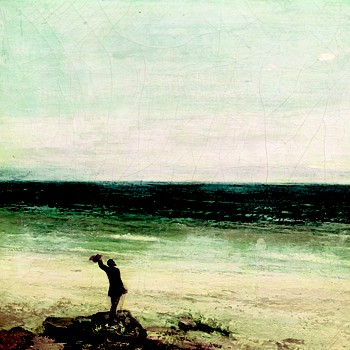
The traveler returned to his region to meet the sea. For this he walked on foot. Not at random, but knowing exactly what he was looking for. He is not surprised by what he sees, and so his feelings are clearly even stronger. There is a restrained, undercurrent of happiness at seeing each other after separation.
I know this beach painted by Courbet. I know it very well. I spent every summer here as a child. When we arrived on the first day of vacation, I raced to the dunes and climbed them to see the sea.
It is truly beautiful – it is a salute to the sea, embodied by Courbet’s colors. A wave of the hand saying “I recognize you, I adore you, I honor you … And I am so happy!”
How right the artist was when he sang this moment. He showed it, gave it life with his brush. And how right we are, every time we give an account of our happy moments, we call them by their name. There is one childishly magical phrase that we can and should say to ourselves whenever bliss touches us: “Yes, this is a moment of happiness.
Recognize and then acknowledge our happiness. In doing so, we join ourselves to eternity. No, happiness itself will not be eternal. But it will always be true that we had that happy moment in our lives.
Some may object: why consciously make so much effort for the sake of feeling happiness? Wouldn’t they spoil the whole thing, destroy its intangible, elusive nature? Why should we call words, always inaccurate and misleading, such subtle and fickle sensations? The answer is simple: because to live is not only to feel and experience, but also to create the world that will be yours.






